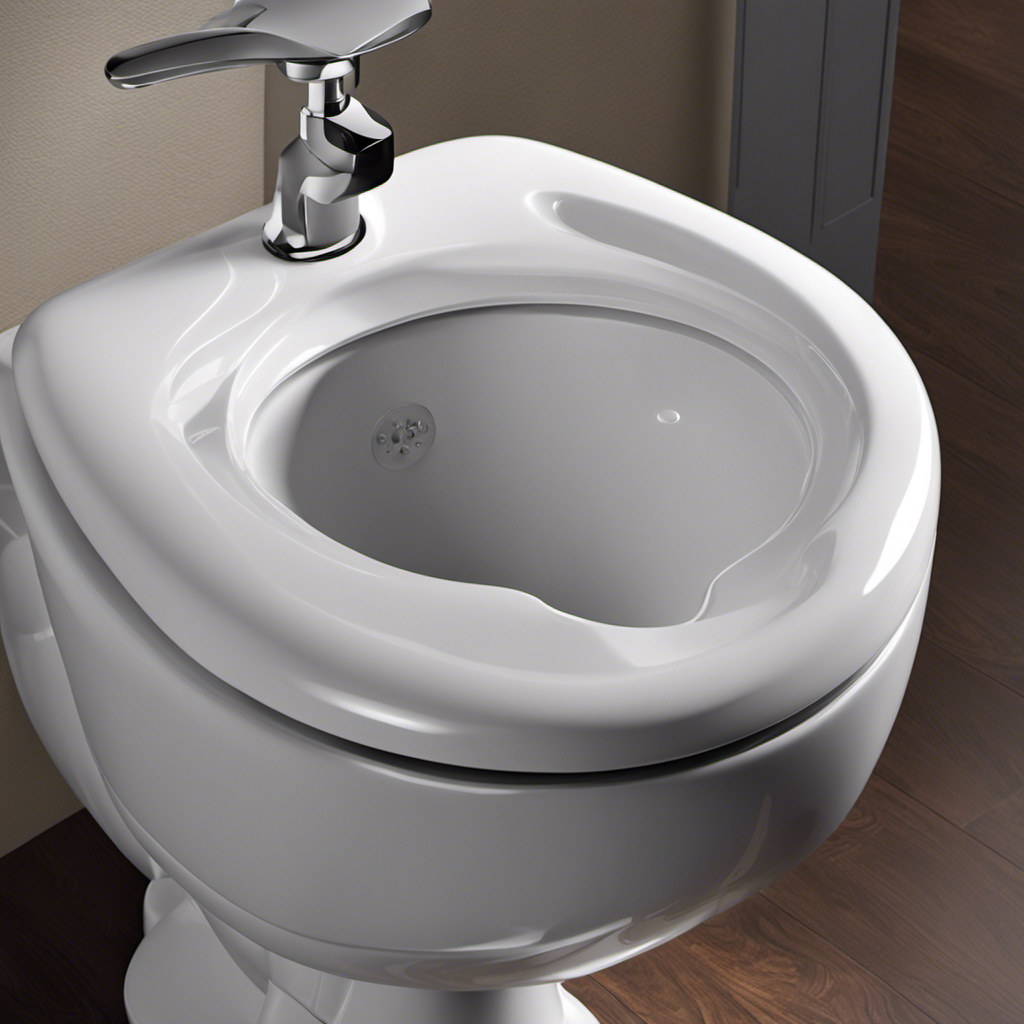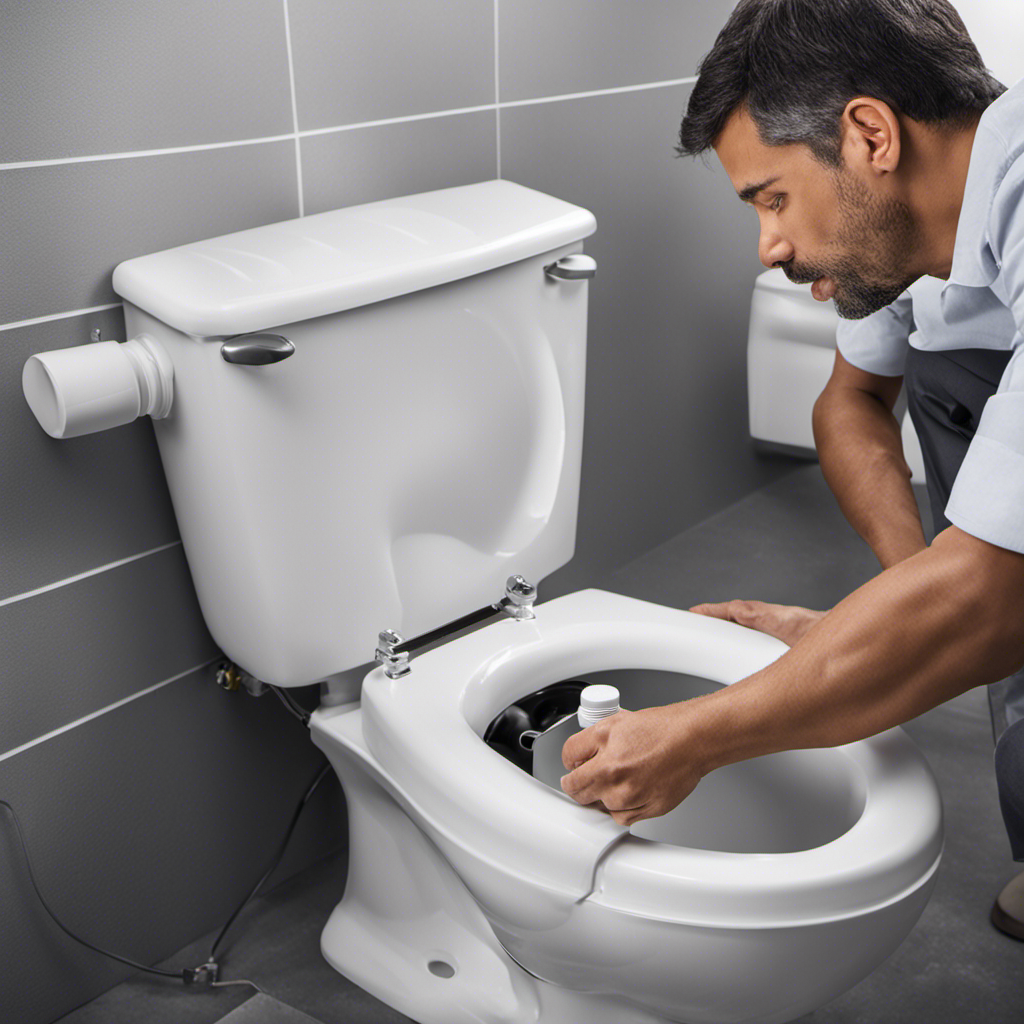As I stand in front of the toilet, water overflowing and frustration mounting, I realize the importance of adjusting the water level. It’s time to take matters into my own hands and tackle this common issue.
With a few simple steps and the right tools, I can regain control and restore functionality to my toilet.
In this article, I will guide you through the process of adjusting the water level in your toilet, ensuring a smooth and efficient flushing experience.
Key Takeaways
- Proper water level is crucial for efficient flushing and bowl cleanliness
- Adjusting the water level promotes efficient flushing and prevents problems
- Faulty fill valve or clogged water supply valve can cause low water level
- Tools and materials needed for adjusting water level include pliers, measuring cup, towel, and replacement parts
Understanding the Importance of Water Level in a Toilet
To ensure proper flushing, you need to understand the importance of maintaining the correct water level in your toilet. The water level in a toilet plays a crucial role in its performance. If the water level is too high, it can lead to water waste and potential overflow issues. On the other hand, if the water level is too low, it may result in incomplete flushing and poor bowl cleanliness.
To adjust the water level in a toilet, there are several alternatives you can explore, such as adjusting the fill valve or replacing it altogether. These adjustments will ensure that the water level is at the optimal height, promoting efficient flushing and preventing any potential problems.
Understanding the impact of water level on toilet performance is essential for maintaining a functional and reliable toilet system. Now, let’s move on to identifying common issues with water level in a toilet.
Identifying Common Issues With Water Level in a Toilet
If you’re experiencing problems with the amount of water in your toilet, there are a few common issues you can look out for.
One common cause of low water level is a faulty fill valve. This valve controls the flow of water into the tank, and if it is not working properly, it may not allow enough water to fill the tank.
Another potential cause is a clogged or partially closed water supply valve. This valve, usually located behind or near the toilet, regulates the water flow into the toilet. If it is blocked or not fully open, it can restrict the water level in the tank.
To resolve these issues, you can try adjusting or replacing the fill valve or cleaning and opening the water supply valve.
Tools and Materials Needed for Adjusting Water Level in a Toilet
When adjusting the water level in your toilet, you’ll need a few tools and materials.
First and foremost, you’ll need a pair of pliers or an adjustable wrench to loosen and tighten the water supply valve. This valve is usually located on the wall behind the toilet.
Additionally, you’ll need a measuring cup or a bucket to measure and remove excess water from the tank.
It’s also important to have a towel or rag handy to clean up any spills or drips.
Lastly, if you need to replace any parts, such as the fill valve or flapper, make sure to have those on hand as well.
Step-by-Step Guide on Adjusting the Water Level in a Toilet
First, you’ll need a pair of pliers or an adjustable wrench to loosen and tighten the water supply valve when adjusting the water level in your toilet.
To start, locate the water supply valve, which is usually located on the wall behind the toilet. Using the pliers or wrench, turn the valve clockwise to shut off the water supply.
Next, remove the toilet tank lid and locate the float ball or cup. Adjust the water level by bending the float arm or adjusting the screw on the fill valve. Make sure the water level is below the overflow tube.
Once you have adjusted the water level, turn the water supply valve counterclockwise to turn on the water. Check for any leaks and ensure that the water level is at the desired height.
Adjusting the water level in your toilet is an important part of toilet maintenance to ensure proper flushing and prevent water waste.
Troubleshooting Tips for Adjusting the Water Level in a Toilet
Once you’ve located the water supply valve and shut off the water, it’s important to check for any leaks before adjusting the float arm or screw on the fill valve. Leaks can prevent the toilet water level from being adjusted properly.
Here are some troubleshooting tips to help you with adjusting the water level in a toilet:
- Inspect the fill valve for any cracks or damage.
- Check if the float arm is properly connected and not bent.
- Ensure that the fill valve is securely tightened to the tank.
- Clean any debris or mineral deposits that may be obstructing the fill valve.
Conclusion
Well, adjusting the water level in a toilet may not sound like the most thrilling task, but trust me, it’s a game-changer! Who doesn’t want a perfectly balanced toilet that flushes like a dream?
With just a few simple steps, you can become the master of water level adjustments. So, next time you find yourself knee-deep in toilet troubles, remember that you hold the power to fix it.
Embrace the irony of finding joy in tinkering with your porcelain throne and bask in the satisfaction of a flawlessly functioning toilet. Happy flushing!










